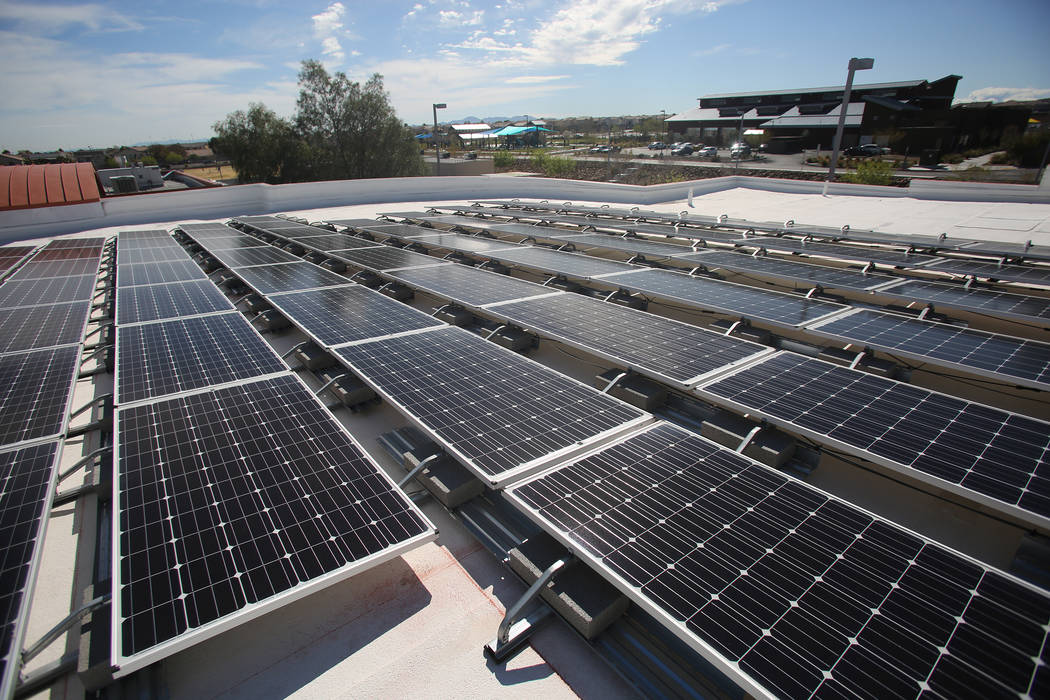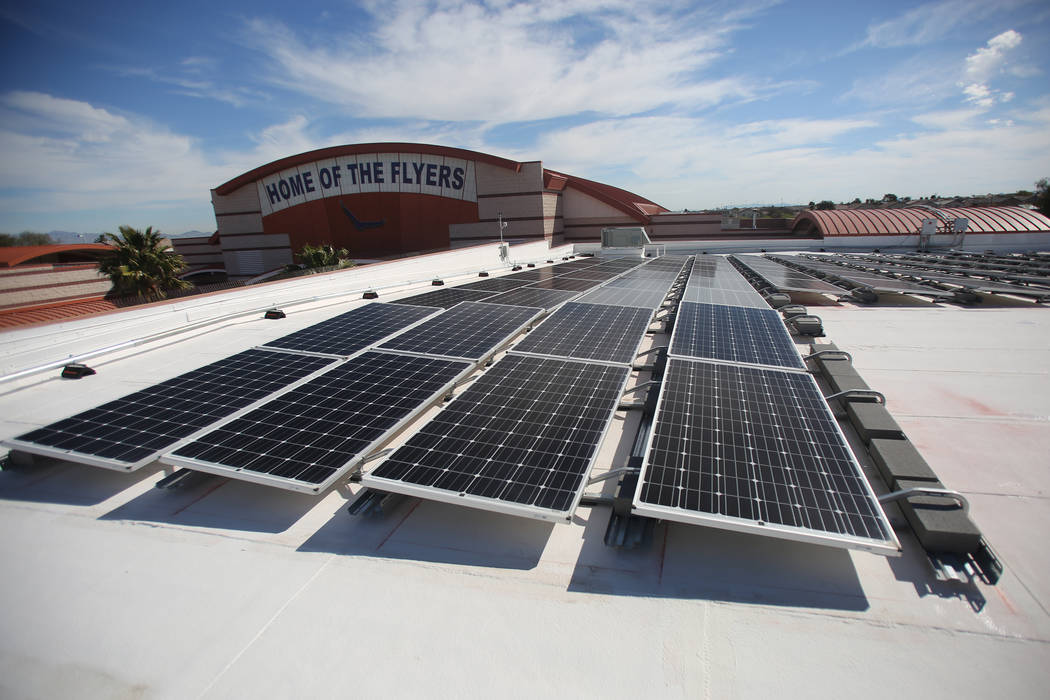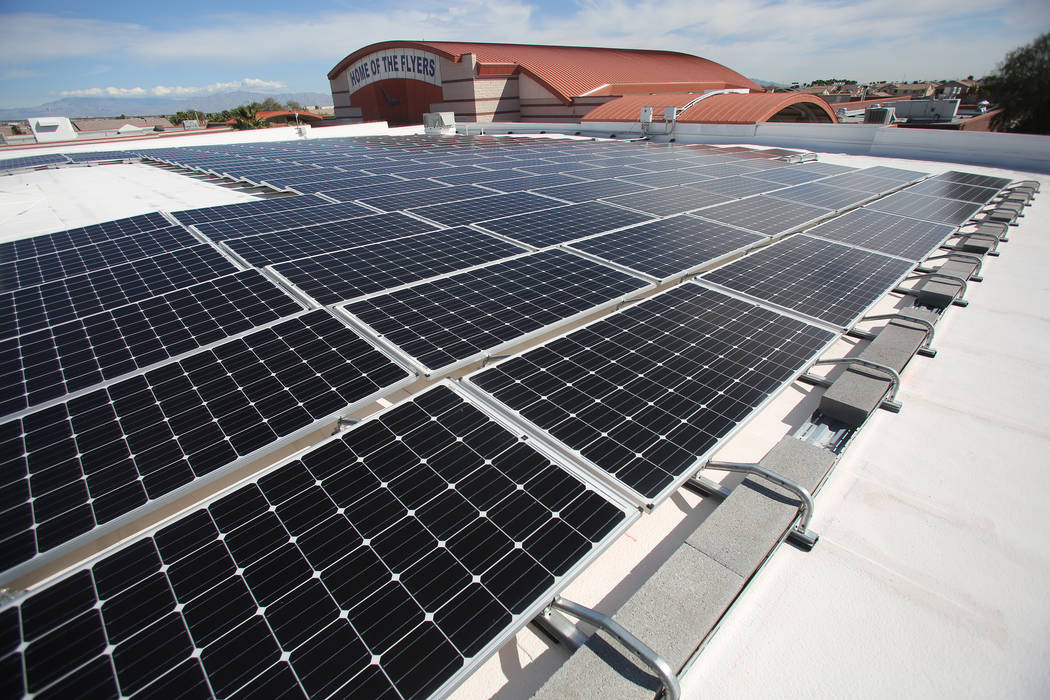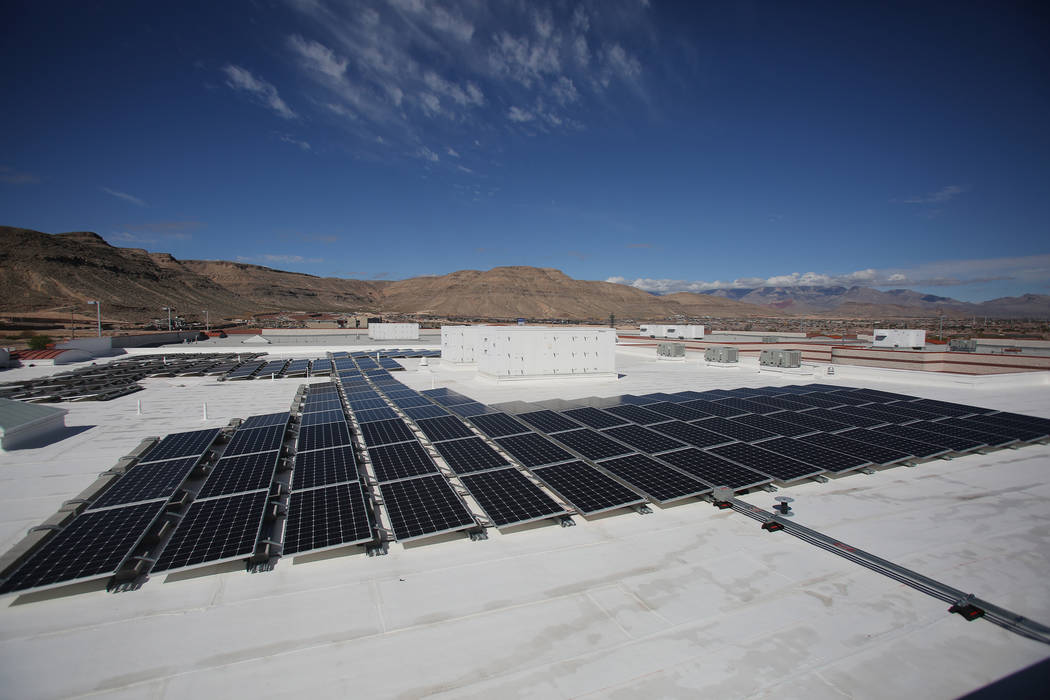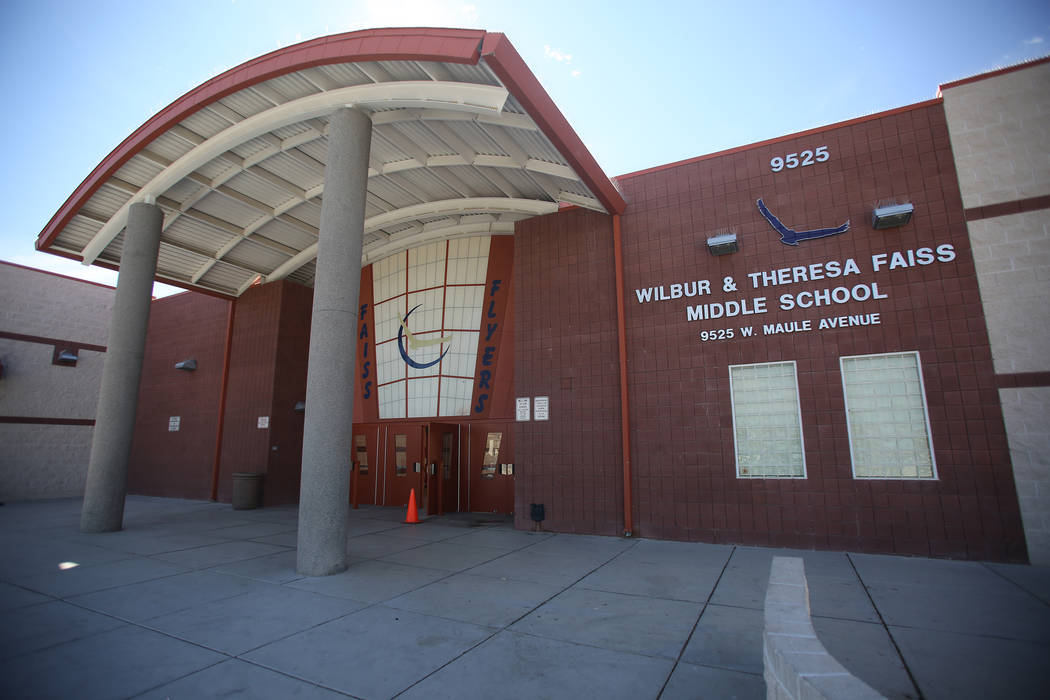Clark County schools harness solar, but some want more
Above the heads of students at Faiss Middle School in Las Vegas, more than 100 solar panels silently churn out power.
Principal Roger West calls the rooftop renewable energy project a “quiet giant” that he rarely needs to address.
“We’re able to kind of quietly reap the benefits of them,” he said recently, pointing at the panels glinting in the desert sun on the school’s roof. “It’s not taking up space that would be used. We’re not losing a parking lot. We’re not losing areas (where) kids could be playing.”
The school is one of 42 in the Clark County School District with solar panel installations that save the district roughly $514,000 per year in energy costs. That’s roughly 13 percent of the district’s total campuses.
Some say the district could be doing more.
Three companies jointly pitched the Clark County School Board in January on a proposal to shift the district entirely to solar power. The School Board took no action on the proposal last month, although it can always bring back the topic for further discussion and a request for proposals.
Such a switchover would be a monumental task that requires proper vetting, said Tom Williard, a former school board member in California and principal of the California solar consulting firm Sage Renewables.
“Really, a best practice is to get somebody who knows what they’re doing to really pull it apart, look at it, and give a disinterested third-party view of the proposal,” he said. “And maybe (with) something this big, you want might to.”
Energy-saving options
The district, which gets most of its electricity from NV Energy, paid for its solar projects in part through the SolarGenerations and Lower Income Solar Energy Pilot programs, both created by the state Legislature and funded by NV Energy customers to provide financial incentives for customers to install solar systems.
The district has received about $11 million through the programs, according to the company.
Apart from the solar projects, the district has also implemented other renewable energy initiatives, including installing LED lighting, that are estimated to save $2.2 million per year, according to the district.
But those savings are tiny compared to what could be achieved if the district switched entirely to solar, according to the power-purchase proposal brought to the School Board by Capital Dynamics, Tenaska and Switch. The proposal, which would power schools from a 195-megawatt solar project to be built somewhere in Nevada, could result in cost savings of $140 million over 20 years, according to an estimate by one insider.
But some School Board members were skeptical of the proposal, including a provision locking in the cost of the electricity for 25 years.
Longer-term deals common
Williard, whose company has over 100 school districts as clients, said long-term fixed rates are common in power-purchase agreements.
That’s due to a number of financial reasons, he said, including tax incentives for investors that don’t begin until six to 10 years after the project is built. A deal with a longer term also enables the provider to give customers a lower rate, he said.
“Since they’re amortizing their cost out for a longer term, you usually get a better (power-purchase agreement) rate if you push it out for 25 years,” Williard said.
Williard said skepticism among school boards also is typical in the confusing world of solar power.
He said he was flummoxed himself when presented with a solar energy proposal years ago as a board member in California’s Bolinas-Stinson Union School District.
“One of the reasons that I now have a company that does this is because we wanted to do a solar project and we went out and looked at and got bids,” he said. “They came in and we went, ‘Wow, how do you make heads or tails of this? They’re all totally different.’”
Not giving up
Though the proposal is stalled before the School Board, the companies behind it are not quitting.
Benoit Allehaut, a director for Capital Dynamics, said the project known as the Gigawatt Nevada initiative is still seeking other large customers to serve.
“Our hope is that, as the school district sees large names join Switch on the Gigawatt Nevada initiative, that they will feel compelled to join,” he said.
The district currently spends about $46 million on average on its yearly energy bill. Allehaut said the project could drop that figure by 10 percent.
NV Energy still touts cost savings and a commitment to double its renewable energy production by 2023.
“We are definitely intent on increasing our renewables,” said Pat Egan, senior vice president of customer operations. “We’re bringing another 500 megawatts of solar that’s already been approved. … That’s at the same time we project having flatter, declining prices.”
Nationwide, schools have increasingly embraced solar power — the cumulative solar capacity of K-12 schools grew 86 percent since 2014, according to a 2017 report from two nonprofits (the Solar Foundation and Generation 180) and the Solar Energy Industries Association.
Nevada has the highest percentage of schools with solar PV panels, at 23 percent.
“If you go back five, six, seven years ago, when schools first started giving into this, a lot of them were doing small demonstration projects,” said Ed Gilliland, senior director at the Solar Foundation and lead author of the report. “But now they’re really doing it for the purposes of … (a) financial proposition that is going to give them a return on investment.”
School districts need to consider a number of factors when contemplating solar power, he said — including conducting a feasibility study and determining whether the district wants to own its system or complete a power-purchase agreement.
Gilliland said he wasn’t aware of any districts run entirely on solar power, and he thinks they will run on 100 percent renewable energy before going 100 percent solar.
“We’re probably a ways away from getting 100 percent renewable, and maybe that’s 20 years away,” he said. “So that’s probably where we go, and then off that, maybe the majority of the electricity would be solar.”
Contact Amelia Pak-Harvey at apak-harvey@reviewjournal.com or 702-383-4630. Follow @AmeliaPakHarvey on Twitter.
Energy choice initiative
NV Energy currently faces a potential threat to its business model through the energy choice initiative that returns to the ballot in November for the second approval required for changes to the Nevada Constitution.
The measure would establish an "open, competitive retail electric energy market." The question passed with nearly 73 percent of voter approval in 2016.



